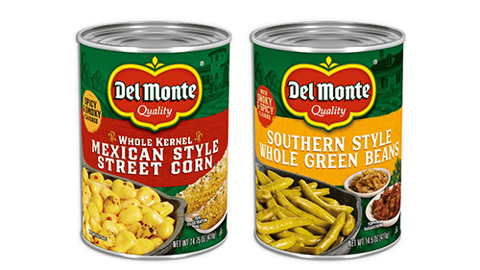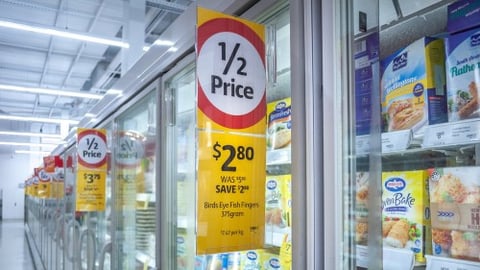Midyear Review of 3 Trends Shaping the Grocery Landscape
Halfway through 2025, the grocery sector continues to be affected by changing circumstances, in both the overall operating environment and at the shelf and screen level. From the regular talk about tariff implications to a flurry of M&A activity within both retail and CPG industries to consumers' splintered buying habits, it’s clear that a quiet year has yet to happen in this decade.
1. Macroeconomic & Geopolitical Upheaval Continues
In addition to ongoing macroeconomic headwinds such as pricing and labor challenges, concerns about conflicts in the Middle East, Ukraine and other parts of the world have impacted global financial markets, supply chains and consumer sentiment, even when crises abate after periodic flares. International trade remains a hot topic, as fallout from tariff announcements and pauses has resulted in pricing pressure and a focus on inventories.
“The tariff situation remains highly fluid and retailers are working hard to stock up for the holiday season before the various tariffs that have been announced and paused actually take effect,” declared Jonathan Gold, VP for supply chain and customs policy at the National Retail Federation (NRF). “Retailers have brought in as much merchandise as possible ahead of the reciprocal tariffs taking effect, and the latest extension to Aug. 1 is greatly appreciated.”
[RELATED: Progressive Grocer's 92nd Annual Report: Anchored Amid Waves]
He continued, “Nonetheless, uncertainty over tariffs makes it increasingly difficult for retailers to plan, especially small businesses that have no capacity to absorb tariffs. Tariffs are paid by U.S. companies, not foreign countries or businesses, and ultimately drive up prices for American families while impacting the availability of products. It is vital for the administration to finalize negotiations with our trading partners and provide stability and certainty for U.S. retailers.”
The on-again, off-again nature of tariffs adds to market wobbliness. This week, President Trump delayed some reciprocal tariffs until Aug. 1 but also announced tariffs up to 40% on several nations.
Meanwhile, although grocery inflation continues to ease, consumer sentiment remains up and down. According to the University of Michigan latest Surveys of Consumers report, consumer sentiment rose 16% in May for the first increase in six months, but is 18% below the spike seen in December 2024.
“Consumers’ fears about the potential impact of tariffs on future inflation softened somewhat in June. Still, inflation expectations remain above readings seen throughout the second half of 2024, reflecting widespread beliefs that risks to inflation have not fully abated,” the U of M researchers concluded.
2. Big M&A Moves Keep Coming
Although the mega merger between The Kroger Co. and Albertsons fell apart, the would-be deal and its aftermath is another signal of instability. Other deals are also making headlines, like the recent speculation that that ALDI Nord and ALDI Süd may be in reunification talks and the announcement that SpartanNash is being acquired by C&S Wholesale Grocers for $1.77 billion; C&S was also a player in the failed merger between Kroger and Albertsons.
Burt P. Flickinger III, managing director of New York City-based Strategic Resource Group, told Progressive Grocer in a recent interview that C&S is entering the picture at a pivotal time, and that the deal will also help C&S serve clients like Target Corp. and others.
“This gives their combined volume higher freshness with higher inventory turns,” Flickinger observed. “SpartanNash, which had an uncertain future, now saves their shareholders. They tried the best they could, but their future was unbalanced. So, this is a coup for Target and saves Spartan.” Flickinger added that the acquisition helps SpartanNash’s military business continue to serve its customers in the armed services.
In addition to grocery deals, M&A trends are also affecting the CPG sector. This week, for example, WK Kellogg Co. confirmed that it is being acquired by The Ferrero Group for $3.1 billion. Meanwhile, federal regulators recently cleared the way for Mars, Inc. to fold Kellanova into its business.
3. Shoppers' Divergent Buying Patterns
The “whack-a-mole” nature of today’s marketplace is evident within the shopper base, too. At the midpoint of 2025, consumers are both resilient and wary.
Progressive Grocer recently talked with Rick Miller, partner and marketing effectiveness practice lead at Big Chalk, which just published a two-part report on the “trade-off consumer” and spending behavior. “If you take a step all the way back out and look at things macroeconomically, we are still doing well, despite all you read about. Bottom line — wages are still up, unemployment is holding and inflation is coming down to the mid-2% range. And the percentage of people that say ‘I am trying to actively cut my budgets’ has also come down in a statistically significant way since the last version of our study in November,” he pointed out.
According to Big Chalk’s, report, the portion of U.S. households actively trying to cut grocery budgets dipped by more than two percentage points. Additionally, in the coffee and lunch meat category, the company found that there is a distinct shift back to name brands from private label.
Still, Miller cautions, many consumers remain in value mode. For example, in spring 2025, 36,6% of respondents said that they are buying more on-sale items, compared to 35.3% in the fall and 32.7% in spring 2024. Big Chalk also found that the trade-off population rose a bit during the first half of this year to 34.5% of all U.S. households.
Miller emphasized that sale-seeking habits are common among many shopper cohorts right now. “You have people who historically may not have been frugal who now think that at the end of the month that their budget is tight,” he said, citing factors like home and car payments. “They are savvy and say, ‘I can make an extra trip and look for items that seem to be a better price’ to maximize their budget,” he remarked.
Looking ahead to the back half of 2025, Miller said that despite the continued uncertainties, industry stakeholders should and are moving their business forward. “My quick bullet point is that if you are waiting for stability, don’t. Just get on strategically with what you want to do. You have to start thinking about a world in which volume may not grow the way it did consistently year over year. You have to think about growth promotions,” he declared.







